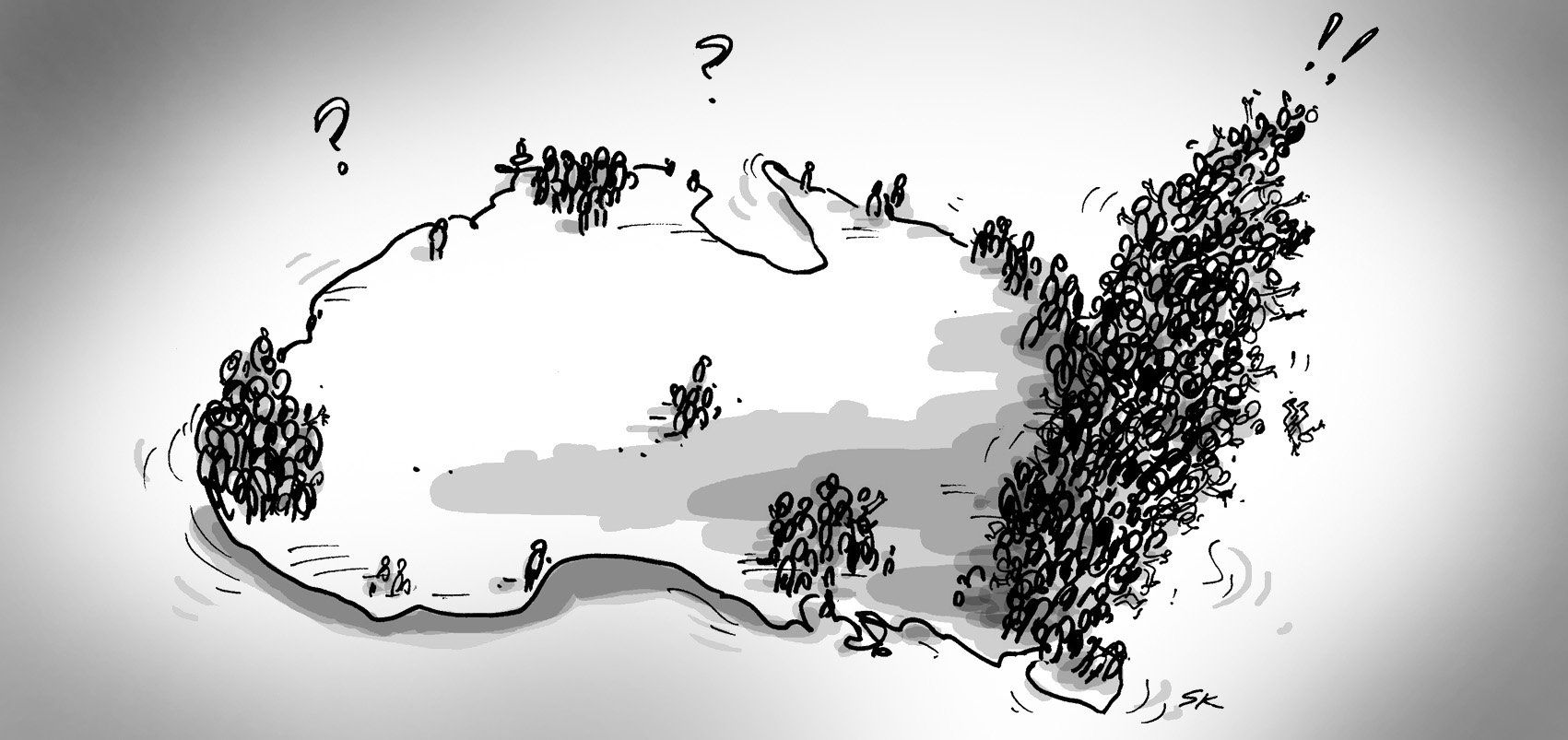In my last blog, I looked at one measure of the urban nature of the population – how centralised each state’s population is around the capital city and surrounds.
But there is another, equally valid way of looking at this. How much do we like to live in built up areas? Australia’s historic national identity has been defined by the bush – The Man from Snowy River, Breaker Morant, exploration and farming. But we have always been a highly urbanised population, with most living in cities and larger towns. How many now do this?
An urbanisation view does away with any reference to the capital city and looks just at the difference between urban and rural locations. The ABS loosely defines an urban area as a centre with a population of at least 1,000, and a population density at least 200 people per square kilometre contiguous with this centre. This is a very brief paraphrasing of the main criteria which are applied to the smallest geographic units from the Census (SA1s in 2011) to define cities and towns by the extent of their spread. These have been used for nearly 50 years and are called the “Linge Criteria”. They are quite involved but that’s enough detail for this forum!
Census data is output on this basis in a classification called “Section of State”. By this measure, you can have rural areas (eg. residential estates with population on 5 acre blocks) quite close to major cities, while a small country town in the outback would be part of the urban population if the built up area contained more than 1000 people. Less than 1,000 people in a centre and it’s a “Locality” which is generally classified as rural for these purposes.

If you were in any doubt that Australia is a fundamentally urban country – here is the figure to remember. As of the 2011 Census, 88.9% of the population lived in urban Australia – the built up areas of towns and cities of more than 1,000 people. So that’s only about 1 in 10 rural and small town dwellers. Here are the figures by state:
New South Wales and Victoria are roughly even at just over 90% urbanised. Western Australia, though it came out as the most centralised state in the previous article, has an urbanisation rate just slightly below the Australian average. This is likely to be because of a lot of very small towns in the wheatbelt and of course populations in mining camps, which usually form parts of rural districts.
The highest rate of urbanisation is of course the ACT, with 99.5% – basically the whole population live in Canberra’s suburbs.
The lowest rates were markedly below the rest -Northern Territory (71.6%) – where quite a bit of the population is in small, dispersed Aboriginal communities. And Tasmania (73.8%) – which has a lot of small towns under 1,000, and a large farming population particularly in the north-west.
This level of urbanisation is strongly increasing over time and has been doing so for many years. Just between 2006 and 2011, the Australian total went from 88.0% to 88.9%, and increased everywhere except the Northern Territory. The drop there is probably due to better Census counts of the more remote communities, where there were major difficulties in the 2006 Census.
How urbanised is your population? atlas.id has information about population density in your area down to very small districts, as well as a wealth of information about the characteristics of each place.










